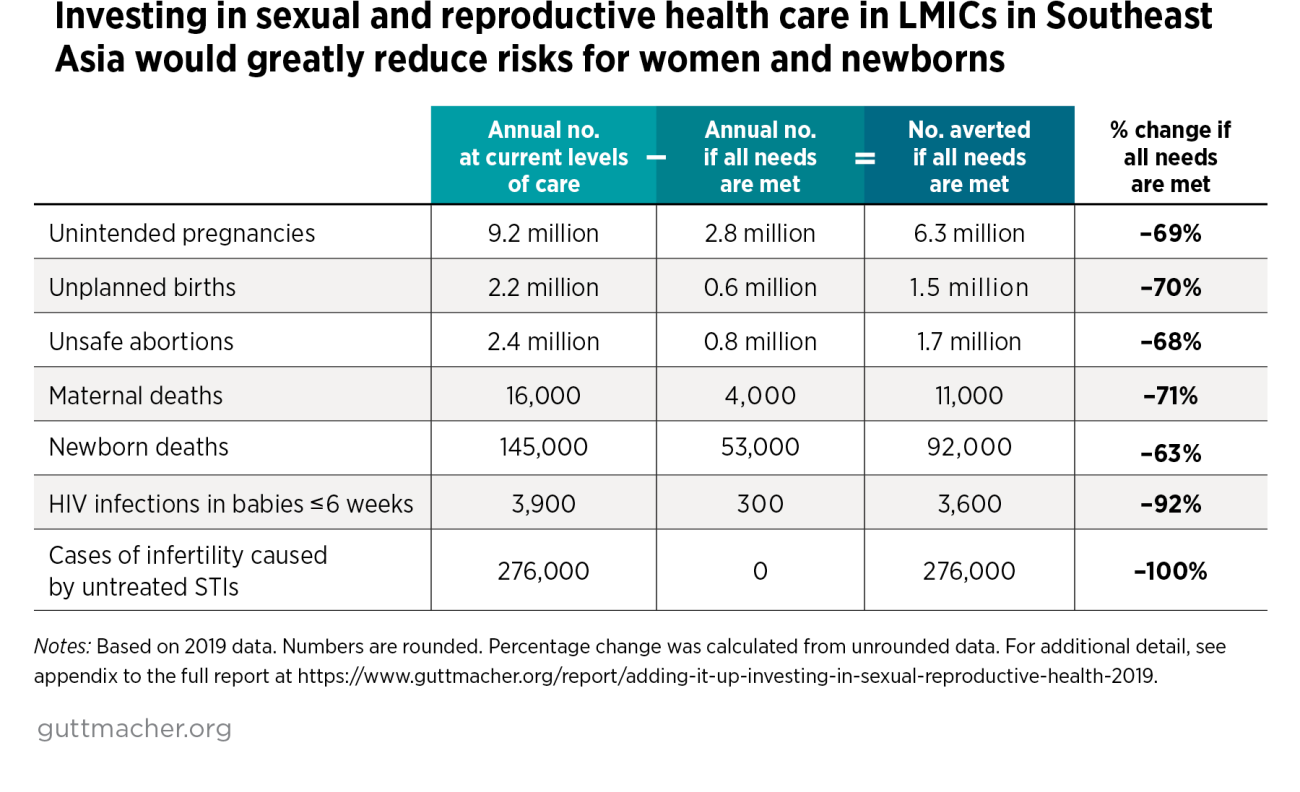The Adding It Up study examines the need for, impact of and cost of fully investing in sexual and reproductive health care—services that together ensure people can decide whether and when to have children, experience safe pregnancy and delivery, have healthy newborns, and have a safe and satisfying sexual life.
WHO: Women of reproductive age (15–49) in nine low- and middle-income countries (LMICs)* in Southeast Asia in 2019
WHAT: Contraceptive services, maternal care, newborn care, abortion services and treatment for the major curable STIs


